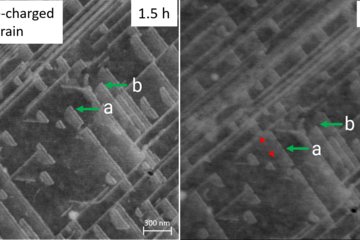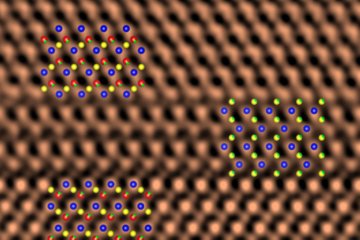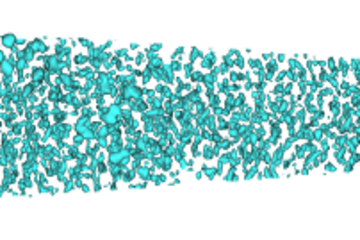All genres
41.
Talk
GPUs beyond gaming: The poor man's supercomputer. S/PHI/nX DevCon, Erkrath, Germany (2012)
42.
Talk
Hydrogen embrittlement - A scale bridging perspective. 1st Austrian-German workshop on Computational Materials Design, Kramsach, Austria (2012)
43.
Talk
Scale bridging modeling of hydrogen embrittlement. MMM 2012, Singapore City, Singapore (2012)
44.
Talk
Continuum modeling of metals at high temperatures. Seminar Numerische Mathematik und Mechanik, Essen, Germany (2011)
45.
Talk
Brittle fracture in viscoelastic materials as a pattern formation process. EUROMAT, Montpellier, France (2011)
46.
Talk
Classical approach to gamma surfaces in 10 steps. CM-Workshop, Attendorn, Germany (2011)
47.
Talk
Development of a continuum model for hydrogen embrittlement at cracks. CM-Workshop, Attendorn, Germany (2011)
48.
Talk
Elastic effects on heterogeneous nucleation and microstructure formation. SPP 1296 Meeting, Bayreuth, Germany (2011)
49.
Talk
Brittle fracture in viscoelastic materials as a pattern formation process. DPG, Dresden, Germany (2011)
50.
Talk
Mesoscale Simulation Group. MPIE Fachbeirat, Düsseldorf, Germany (2011)
51.
Poster
Novel Lamellar in situ Composite Materials in the Al-Rich Part of the Fe-Al System. Int. Conf. The Materials Chain: From Discovery to Production, University Bochum, Bochum, Germany (2016)
52.
Poster
Atomistic and inverse-analytical modeling of elastic properties of coherent nano-phases. GDRi CNRS MECANO General Meeting on the Mechanics of Nano-Objects, MPIE, Düsseldorf, Germany (2013)
53.
Poster
Phase field modeling of phase transitions stimulated by Joule heating. Meeting of the SFB 917, Schleiden, Germany (2012)
54.
Poster
Exploring GPUs for Mesoscale Simulations. DPG Frühjahrstagung 2012, Berlin, Germany (2012)
55.
Poster
Mesoscale simulations using GPUs. 1st Austrian-German workshop on Computational Materials Design, Kramsach, Austria (2012)
56.
Poster
Elastic effects on heterogeneous nucleation and microstructure formation. Colloquium SPP 1296, Bayreuth, Germany (2011)
57.
Poster
Modeling of pin-tree nanowires. Frühjahrstagung der DPG, Dresden, Germany (2011)
58.
Poster
Continuum Modeling of Phase Formation. Colloquium SFB 917 Nanoswitches, Aachen, Germany (2011)
59.
Poster
Continuum modeling of hydrogen embrittlement. Gordon conference "Physical Metallurgy", Easton, MA, USA (2011)
60.
Teaching
Thermodynamics & Statistical Physics. Lecture: WS 2014/2015, Ruhr University Bochum, Bochum, Germany, October 01, 2014 - March 30, 2015











